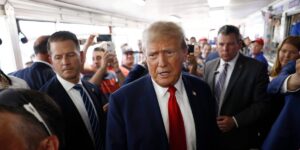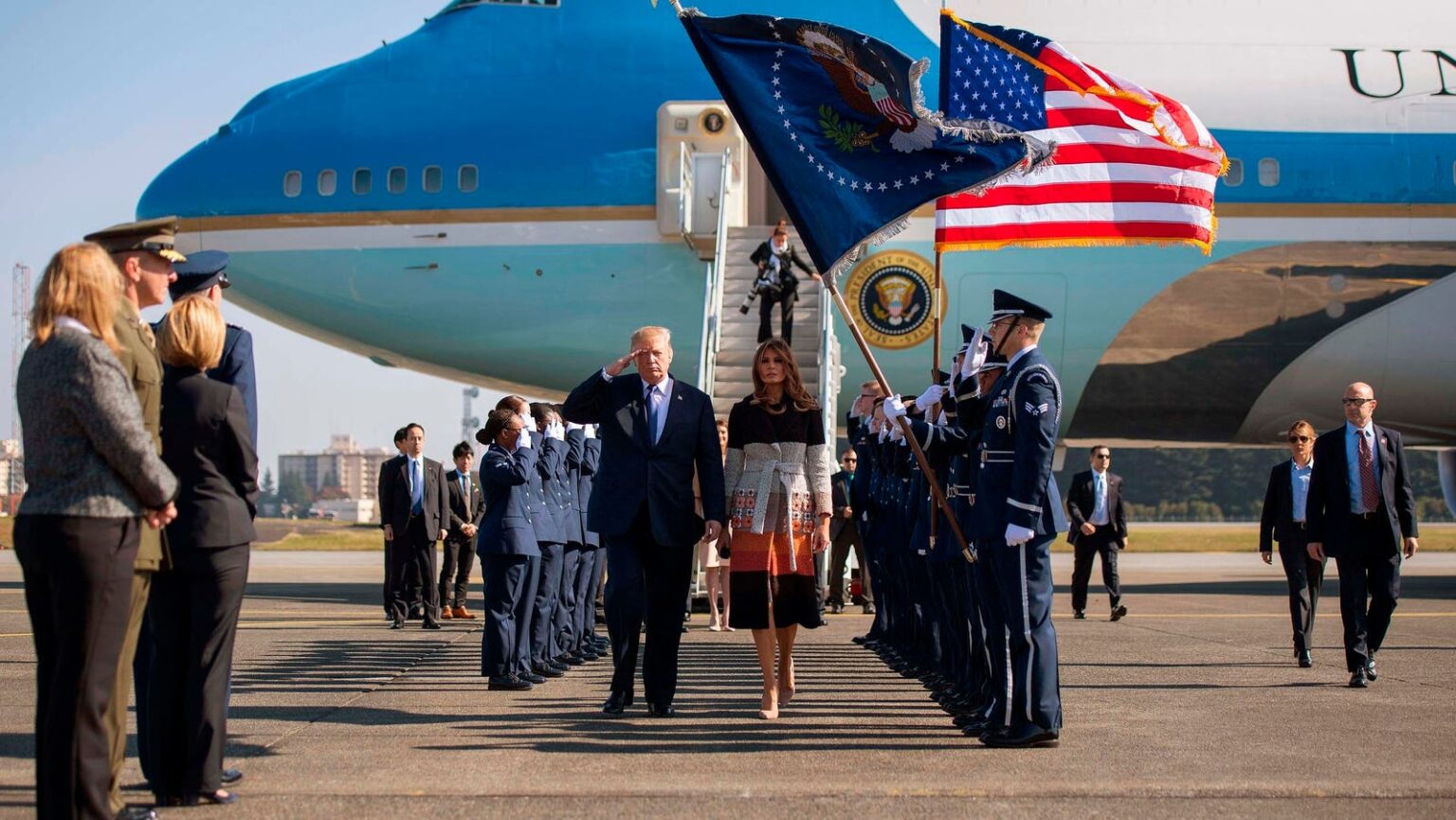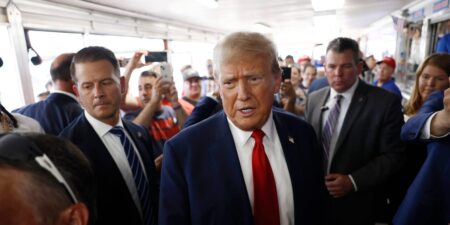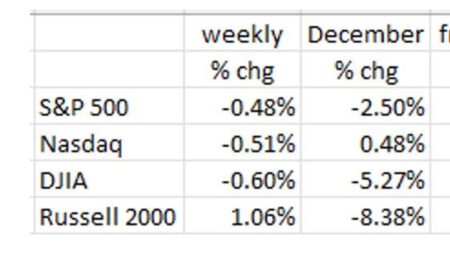When Donald Trump takes office for a second term as U.S. president, savvy Asian players should find plenty of opportunities for investment and co-innovation:
The incoming administration has signaled its intent to deregulate some emerging sectors, such as crypto, that Asian entrepreneurs seek to tap.
Trump himself told Softbank’s Masayoshi Son that he will welcome greenfield investments that create American jobs—although his public opposition to Nippon Steel’s proposed $15 billion purchase of U.S. Steel, now blocked by outgoing president Joe Biden, suggests that acquisitions could be a stickier proposition.
Supply chain players, meanwhile, will find opportunities to arbitrage tariff differentials once Trump applies uniquely high rates to China but lower rates to other Asian exporters.
But these investment opportunities are hardly the end of the story.
Geopolitically, Asian governments, firms, and especially markets should prepare to face a whirlwind of strategic turbulence.
Bluntly put, longstanding assumptions and presumptions about American power, purpose, policy, and strategy in the world’s most economically dynamic region are about to go out the window. Nearly every major American relationship in Asia—even with Washington’s two closest treaty allies, Japan and Australia—is heading for rockier shoals.
Here are five things to expect, some of which will disrupt decades-long expectations about American posture and strategy in Asia .
1. American centrality will further recede. By 2029, expect the Asia-Pacific to be more “Asian,” less “Pacific,” and much less U.S.-centric.
Despite considerable braggadocio from the Biden Administration about “rebuilding American influence,” the United States is, in fact, badly positioned in Asia strategically. Now, Trump will likely further erode some of the longstanding pillars of Washington’s role.
For decades, Asia’s security and economic orders were tightly intertwined, with the United States playing the key role in both: America’s navy patrolled Asia’s sea lanes to enable commerce; Washington’s trade policies promoted rapid growth by keeping the U.S. market open as a reliable source of demand for Asian exports while pressing for market-friendly trade rules region wide.
But while fear of China means that most Asian countries still welcome the U.S. security role and will find new ways to enable America’s forward-deployed military presence, the pillars of American economic leadership have been eroding in Asia since the 1990s. U.S. trade and investment is rising in absolute terms while declining in relative terms. And as this relative role recedes, Washington has not compensated by stepping in to lead on rule making.
To the contrary, the U.S. has withdrawn from regional trade pacts, even the ones it once championed. It has failed to meet Asian expectations for enhanced market access, blocked acquisitions by Asian companies, sanctioned Asian firms that sell technology to China, and extraterritorialized the application of U.S. export controls while unilaterally sanctioning third parties for transactions with the bêtes noires of American foreign policy.
Whatever the strategic and domestic political rationales for these policies, the result has been a marked shift in the traditional U.S. economic role in the region.
Asian countries have sought to insulate themselves from U.S. policies by ratifying multilateral and plurilateral pacts without the United States, updated or upgraded their own bilateral trade deals while Washington has concluded none, and launched new regionally based digital and environmental partnerships that the United States has declined to join.
Trump shows no intent to reverse these policies. He has shown zero enthusiasm for plurilateral trade pacts or promised enhanced market access deals. And he looks almost certain to impose new tariffs on a host of Asian exporters, including but not limited to China.
Nor does Trump share the traditional U.S. enthusiasm for underwriting Asian security as a “public good.” He says often that he expects allies and partners to assume greater unilateral burdens in their own defense—higher budgets, more weapons purchases, and accelerated procurement from U.S. firms. More concerning for Asian partners, Trump has teased linking demands for trade and market access concessions to future U.S. security commitments, calling on countries to “pay more” for U.S. extended deterrence.
Taken together, these policies will exacerbate the underlying structural shifts that have progressively eroded U.S. influence since the 1990s. Asian governments and firms will adapt by leaning harder into Asia-only solutions.
2. Fear of China won’t yield a U.S.-led anti-China coalition.
The United States has sought to compensate for this structural erosion by leaning on shared fears of China as the glue that will both anchor the region to U.S. foreign policy and help build new U.S.-centric coalitions. And it is true that aggressive Chinese conduct, from the South China Sea to India’s Himalayan border, has unsettled many Asian countries, not just the United States.
But ironically, even countries that fear Chinese power have accelerated aspects of their economic integration with it. No U.S. strategy that aims to compensate for structural decline by shouting “China threat!” will automatically anchor Asian countries to Washington.
To lead, the United States needs bold initiatives that speak to Asian interests. Instead, it has mostly just poor-mouthed the Chinese competition. And this flips the script on the traditional U.S. approach to the region. Where Washington once sought to “get China right by getting Asia right,” it is instead increasingly making its Asian relationships and policies derivative of its focus on China. Too often, then, even those that share American ambivalence about Beijing conclude that they are of little interest to the United States except as proxies in a U.S.-China slugfest.
For markets, this China-first approach has been manifest in Washington’s promiscuous use of unilateral sanctions against Asian companies that interact with China’s high-tech industrial base. That policy has now bled from a small number of sectors (a “small yard,” in Washington parlance) to nearly every sector in which capital, technology, knowledge, or data flow to China’s technology industrial base, even in, for example, the life sciences.
And Washington increasingly aims to coerce compliance from third players, who are not voluntarily breaking up with China, by applying export controls extraterritorially.
Unfortunately for Asian governments and firms, this catches them in double bind because Beijing is copycatting Washington with its own coercive toolkit—something that Australia, the Philippines, South Korea, and Taiwan all discovered when China punished their firms or boycotted their products in retaliation for enhanced strategic cooperation with Washington.
Still, Trump’s hawkish national security team seems to be banking on the China threat to knit Asian partners into a U.S.-led coalition.
But Asian governments are unlikely to bite. After all, investment from China is expanding even in countries that fear Chinese power.
Just take Vietnam, which fought a war with China as recently as 1979. Chinese investment has tripled in just a decade, with China becoming Vietnam’s second-largest foreign investor after Singapore in the first ten months of 2024.
Some but not all of this investment aims to skirt the U.S. tariffs. But punishing that behavior means bringing the hammer down on Vietnam, hardly a step that would win Washington strategic support in Hanoi, where a new leadership dominated by public security and military officials actually sees eye to eye with China in some areas.
Or look at India where, despite entrenched and growing security tensions, imports from China have risen in 2024 in many segments, including machinery.
And the rule-setting trade pacts Trump detests could fuel this trend. The Regional Comprehensive Economic Partnership, which includes China but not the United States, allows Vietnam and its Southeast Asian neighbors to trade with China at 0% tariff in some segments while facing the prospect of higher U.S. tariffs from Trump.
3. America’s Asian allies are politically volatile and strategically fragmented.
To contain Chinese power, Trump’s hawks will logically aim to build a democratic, market-friendly coalition. But their boss could flirt with bringing down the tariff hammer on these partners too.
Indeed, America’s Asian allies aren’t even on the same page strategically. And nearly all of them are beset by minority governments, weak majorities, shaky coalitions, or underwater leader approval ratings.
Japan is Washington’s most natural strategic partner and shares the deep U.S. ambivalence about China and its security conduct. But its minority government under Shigeru Ishiba barely scraped back into power.
Trump has teased threatening Japan with tariffs, demanding funding for bases, insisting on weapons procurement, and even linking expanded security ties to economic concessions by Tokyo. This would further weaken Ishiba, while yielding pushback from a Japanese business community that still hopes to keep conflict with China muted.
In South Korea, Yoon Suk-yeol’s failed attempt to impose martial law has led to impeachment, two acting presidents in just a month, and political and currency volatility. Yoon was a darling of America’s strategic class, but a probable left-wing government under Lee Jae-myung looks set to take power within months and will not simply march to the beat of Washington’s drum.
Yoon’s botched autogolpe has new pressure on the alliance itself. He ordered elite military units to arrest opposition and dissident ruling party lawmakers while keeping U.S. commanders, who rely on South Korean forces to help deter North Korea, in the dark. And Seoul could face tariff pressures , exacerbating bilateral tensions.
Thailand, beset by unstable governing coalitions, is America’s oldest Asian treaty ally but shares almost none of Washington’s hawkish proclivities toward China.
The Philippines, by contrast, has leaned hard into its security partnership with Washington. But President Ferdinand Marcos, Jr. is unpopular, with an approval rating underwater at 48 percent and falling fast.
Even the U.S.-Australia alliance, anchored by its strong bipartisan foundation in both countries, faces new complications. Anthony Albanese’s Labor government has a slim majority that will likely be reduced to a minority in 2025.
The Labor government could be at loggerheads with Trump on climate change, fueling strategic tensions around how best to compete with China in Australia’s Pacific neighborhood, where Chinese influence has steadily advanced. For Pacific countries like Vanuatu, which has brought a climate case before an international tribunal, climate change remains the number one priority but U.S. policies on emissions and international pacts will shift markedly from Biden to Trump, raising tensions in the Pacific.
Even on security, where Australia obviously shares Washington’s deep-seated strategic concerns about China and actually beat Washington to the punch in toughening up some technology and investment policies, there could be expectation gaps. Washington’s priority is to integrate both Australian and the U.S. forces that rotate through Australia into its China-centric war plans. But for sovereign and political reasons, no government of any party will pre-commit Australian forces.
4. India has more significant strategic opportunities with Washington than any country in Asia but growing American technonationalism could tap the brakes.
This leaves India as a notable exception in Asia. Prime Minister Narendra Modi looks set to nurture a strengthened relationship with Trump while expanding India’s strategic opportunities.
For one, unlike America’s five formal treaty allies, India has a “strong enough” government, even in coalition. Trump and Modi have a demonstrated rapport. And Trump’s hawkish national security team views India as the “un-China”—another continental-sized Asian country whose rise in itself can help to balance the rise of Chinese power.
But market participants may still see some scratchiness around three issues:
One is immigration, where Trump has, for the moment, sided with Elon Musk on visas for foreign workers but could reverse himself.
Anotheris trade, where Trump has teased the possibility of pressure against India while touting an “America first” approach that hardly seems likely to embrace a flood of “make in India” investment in lieu of investment in the United States.
The third is technology sharing, which has grown under four administrations including Trump’s first one. It is the most dynamic and promising area of the U.S.-India relationship alongside expanded military cooperation.
Indeed, tech collaboration bears especially close watching because Washington and New Delhi have made strides with their initiative on critical and emerging technologies, or “iCET,” launched in 2022. Trump embraced cooperation with India in his first term, is enthusiastic about India generally and Modi personally, and his team’s emphasis on diversifying U.S. tech-enabled supply chains away from China should create fresh opportunities.
But some in Trump’s orbit have a penchant for keeping American technology close to home. This could tap the brakes on some aspects of the initiative while complicating American technology flow to India in areas, like AI, where his team is focused on enhancing U.S. competitive strengths, not co-innovation with foreign partners.
Partly as a response to China, a new American technonationalism has the potential to securitize exports and flows everywhere, even to India.
5. Despite Trump’s transactional instincts, Washington and Beijing will both squeeze businesses, investors, and innovators.
Yet it is U.S.-China relations that face the greatest disruption.
Trump, Biden, and their teams share some broad strategic assumptions about China—not least, a tendency to treat nearly every economic issue as a national security concern. For its part, Beijing shares some similar predilections: President Xi Jinping, after all, often stresses the national security implications of transactions with and dependence on foreign technologies, systems, and companies.
A central dynamic in the U.S.-China relationship, therefore, has been the push and pull between the American impulse to stanch economic flows to China and the Chinese impulse to indigenize them.
For nearly a decade, this has led both countries to increasingly “securitize” many aspects of their economic and technology policy. Washington in particular now treats dependence on the flow of goods from China but especially the flow to China of capital, people, data, knowledge, and technology as an inherent threat to American security and competitive positioning.
Technology flows are especially vulnerable. Greater securitization is inevitable because so many emerging and foundational innovations, from AI-enabled applications to new synthetic and composite materials, are inherently dual use.
And there is nothing to suggest these strategic assumptions will change once Trump again takes office. So, the U.S.-China relationship will continue to shift from merely competitive to outright adversarial.
For markets, this will mean frequent tactical shifts by the administration in response to corporate special pleading but no real reversal in the overall downward trend line. Like alternate side of the street parking in New York City, Trump has shown a considerable capacity to make deals one day while resorting to threats the next. But this is a highly unpredictable approach that businesses will find challenging to navigate.
For Beijing, Trump’s bottom lines and “endgame” with China are hardly obvious. And his national security team is especially hawkish on China. We will almost certainly see structured mechanisms suspended, including a channel between national security advisors that Biden’s team set into place alongside an elaborate architecture of dialogues and working groups that Trump’s advisors view as empty at best and a Chinese ploy at worst.
This lack of formal dialogue structures will make it more challenging to keep the bottom from falling out once Trump’s inevitable trade and tariff moves begin and China retaliates with export controls aimed at curtailing the supply of printed circuit boards, critical minerals, and other inputs needed by U.S. industry.
China will also attempt to further “de-Americanize” its foreign policy. In other words, it will offer concessions, manipulate access to its market, grant special permissions and one-off licenses, and generally try to improve relations with as many countries as possible, including U.S. allies while attempting to ring fence the worst outcomes with Washington. Not surprisingly, this could complicate the Trump team’s efforts to build a “tough on China” coalition in Asia and globally, since few countries share Washington’s highly securitized view of economic interaction with China.
Beijing will face obstacles to this strategy in Europe, since its de facto support for Vladimir Putin’s war against Ukraine is an albatross around Beijing’s effort to improve relations. But it will fare better in industrial Asia and across the Global South. From Africa, to Central Asia, to Latin America, to the Middle East, China increasingly offers market access, knowledge transfer, and upskilling, not just debt-backed finance or the big-ticket resources-for-infrastructure investments that have sunk its popularity in many places.
And ironically, even Taiwan could find itself squeezed in Washington.
Taipei enjoys broad and deep bipartisan support, including from Trump’s advisors and from both Republicans and Democrats in Congress. But Trump himself is no hawk. And he has shown little evidence to date that he shares in this establishment consensus to embrace Taiwan. When Trump’s team and Congress push for symbolic gestures of support for Taipei, Trump could well reverse them—as he sometimes appeared to do in his first term.
For Taipei, this would create a dual danger: Trump either overcorrects by accommodating Beijing and fueling Taiwan’s fears of strategic abandonment, or else hugs Taiwan more tightly but as a proxy or bargaining chip in the larger fight with China. Trump could, for example, threaten to inject greater “officiality” into ties with Taipei unless Beijing meets his trade demands or offers concessions on unrelated White House priorities.
Either way, Taiwan could be dealing with a more volatile, less predictable U.S. policy.
And so could we all.
Market participants, corporate planners, and technology innovators should strap in. It will be a rocky but strategically meaningful next four years.
Read the full article here
















